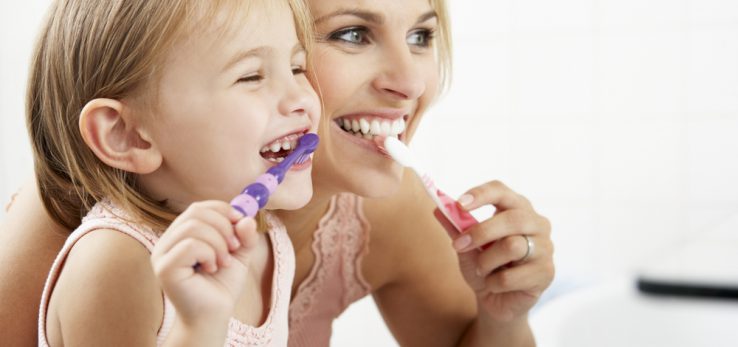How to care for your child’s teeth?
Describing brushing methods so they are understood by the patient is impossible without showing them, which is why we invite you to watch the videos (please note that the videos have been made by external parties).
Electric toothbrush→ http://www.youtube.com/watch?v=DtpOv_0X2Yg
Traditional toothbrush → http://www.youtube.com/watch?v=vwFs_hh4M5Y
for younger children who are learning to brush we recommend the Fones technique, and for the older ones the “roll” method, do not use other methods without consulting a dentist due to the risk of periodontal damage!
What kind of toothpaste to use?
In selecting toothpaste the most important element is fluorine content, which is easy to check on the package. Depending on age, use toothpaste containing the following amounts of fluorine:
To 2 years of age → 500 ppm of fluorine (pea size amount of toothpaste)
2-6 years of age → 1000 ppm of fluorine (pea size amount of toothpaste)
6 years of age → 1450ppm fluoride of adult toothpaste.
Remember that fluoride toothpaste is not to be swallowed!
If the child cannot spit, after brushing remove the excess paste using wet gauze wrapped around the finger.
Can children use mouthwash?
Children from the age of 6 can use mouthwash in their daily hygiene. Children’s mouthwash does not contain alcohol. It is composed of milder or lower concentration substances; these rinses are enriched with ingredients strengthening the enamel. Often their colour, taste and smell encourage their use. Choose them according to individual health needs, and always use in accordance with the manufacturer’s instructions or as directed by your dentist.
Dental floss
Is an essential element of oral hygiene, used to clean the surfaces not reachable by the toothbrush. It should first be implemented at the stage of full milk dentition (after eruption of second molars). Initially, parents help in the flossing process, but an 8 year old can already floss his own teeth.
